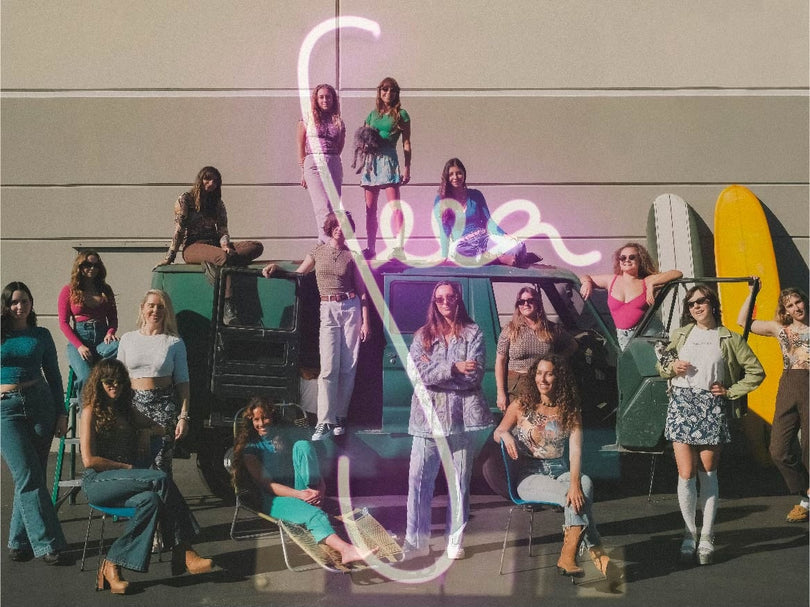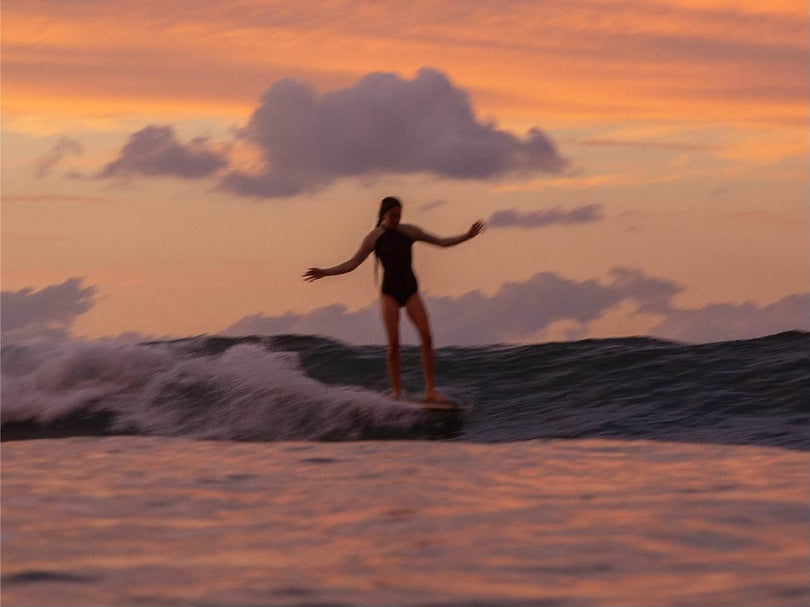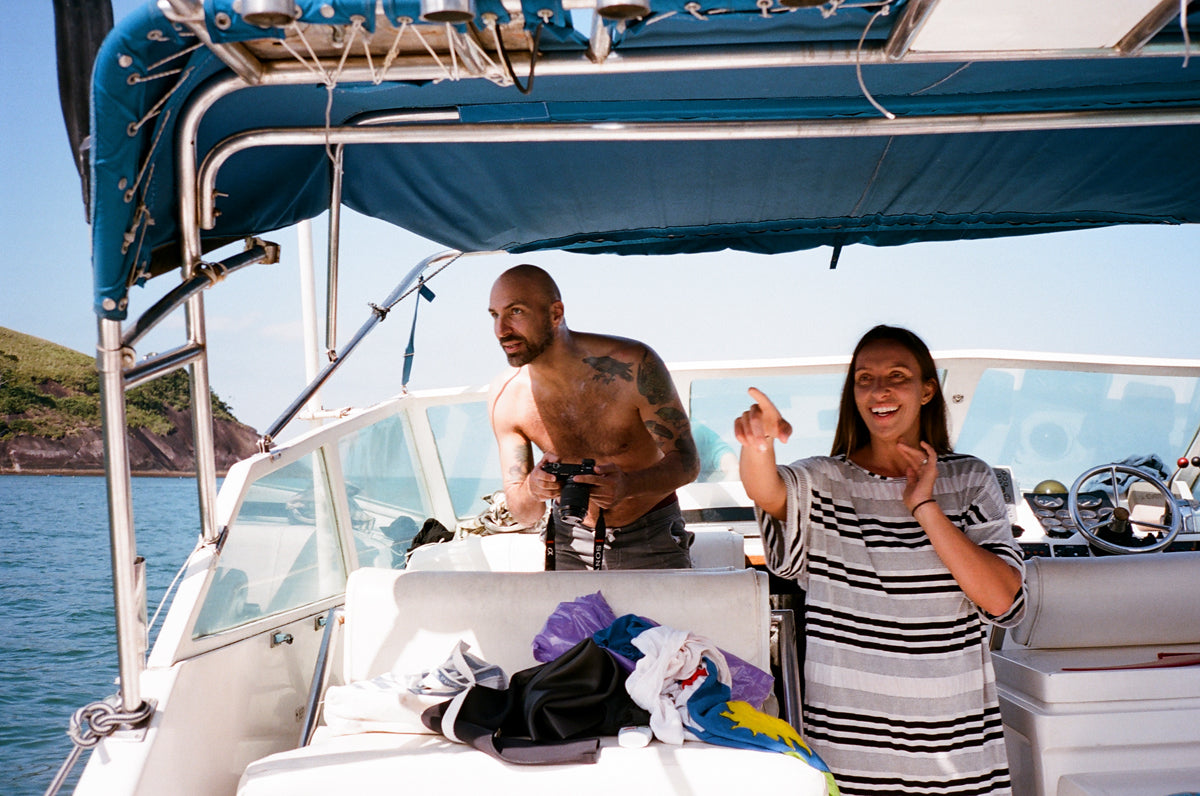By Lauren L. Hill
It’s the last weekend of summer, and you can tell. The parking lot is packed. Kid Rock is warring with Kenny Chesney for sound space, while Nellie and a mariachi band I don’t quite recognize round out the worldly soundscape. We’ve driven an hour and a half inland to Ginnie Springs to find some solace in the forest. Solace we do not find, but we end up with a fresh education in modern Floridian anthropology. What some call the “Redneck Riviera.”
Ginnie is one of Florida’s many freshwater springheads that draw land-locked locals during the heat of summer. It’s 90-something degrees today, and the water is a refreshing 72 all year round. Imagine walking through the sticky, humid, scrubby Floridian forest and then happening upon a glittering turquoise oasis of bubbling spring water so fresh that you can drink as you swim (and pee as you drink in order to get the full ‘I’m just a vessel’ effect).
We park near the springhead, and can’t believe our eyes: what should be a glimmering eye of turquoise water is instead a soup of plastic inflatables and people shoulder-to-shoulder, floating arm’s length from one another.



Lauren wears the Floripa Reversible Surf Suit in Buzios.
I’d been so excited to bring my Australian partner Dave to the springs. Florida has a terrible reputation—all Disney World and retirees and white denim and hanging chads—I couldn’t wait to dispel a little bit of the stigma with the wild beauty of our springs. “… But Florida does have the highest concentration of springs in the world!,” I recite, again and again, trying to redeem my home state from our tendency towards backward red-neckery and surely the highest concentration of anti-abortion billboards in all the world. It’s a sometimes wonderful, but sometimes very weird place.
Around 1000 spring heads boil up fresh water throughout the state, most of which are in north and north-central Florida, a place that Jack Donaghy of “30 Rock” fame summed up as “a combination of elderly shut-ins, beach bums, bus passengers who ran out of money, swamp people, and pirates."
We’d been struggling with the month-long hot, flat spell that is August in Florida, so we headed inland to free dive and float under a cool canopy. The boardwalk beside the water is bustling with kids jumping in and climbing out of the water. I overhear a little girl in a purple one-piece ask her mom where the water comes from, but we’re walking past and country music blares and I don’t get to hear her mom’s response.

Lauren wears the Bondi Surf Suit in Coco.
We find a little patch of dirty sand to park our stroller, beneath an oak tree cloaked in Spanish moss, and wedged between a Hispanic family sautéing a mountain of peppers and onions on the barbeque, and a pack of country mamas parked in camping chairs, sipping on Bud Lights.
We accept the fact that we must join the human soup if we are going to be in the water here. We didn’t actually bring a float to use, except one for the baby and a board that we keep in the car just in case swell miraculously arrives out of nowhere. So we’re bobbing and weaving around giant inflatable unicorns and air mattresses and kayaks, and we notice a kind of beauty in it all – so many different kinds of people all brought here to play, to enjoy the water, to be outside. There are quite a few cultures represented – camps and packs of each staked out on land and flotillas tied together for downriver travel. And overall, everyone is pretty civil; tolerant and minding their own business. And then from the floating masses, a single voice emerges. “Play Freebird!!”
A reminder that they don’t call it the Redneck Riviera for nothin’. 

Lauren wears the Rhea One Piece in Vilea.
We head back Ginnie two weeks later, the ocean is still flat and we’re still desperate to be under water.
I keep recalling that little girl asking her mom about where the water comes from. What a good question. Where does water come from? It’s hot and I’m thirsty, so, more specifically I’m wondering: where does my drinking water here come from? I’ve never taken the time to ask.
I spent all my childhood on a barrier island off the coast of Florida, surrounded by water. It’s been four years since I’d been back here, having spent the last years traveling, surfing, birthing and raising a baby. I love visiting home, but I always dread the tap water. Back in Australia, we have massive cisterns, so all of our water is filtered rainwater. No chemical smell on your skin after a shower. (I’m officially a water snob.)
Floridian tap water is sharp with chlorination and it’s salty, so much so that it feels almost dehydrating to drink. For lack of a better word, it feels ‘dead.’ Tortured. Stripped of elemental magic and nutrients. It’s like the difference between fresh, crisp garden greens with delicate, complex flavors and bleached, soggy iceberg lettuce from the Pizza Hut salad bar. It’s no surprise to my palette that Florida, despite its immense watery wealth, holds the number two position on the list of worst water quality in the country.
Wondering why your water tastes “like that”? This table from the fine folks at Plumbing Today relates water taste to potential contaminants:

More than 30 million gallons of the clearest water you’ve ever seen boils out of Ginnie Springs each day, bubbling up from Florida’s intricate aquifer system. The Coca-Cola Company is permitted to extract around 600,000 gallons a day from this very spring. “Their” water is mixed with other waters, wrapped in plastic and sold in Dasani bottles. Being here, watching the water boil and entrain out of the Earth to make a stream that feeds the Santa Fe River, makes the idea of packaging and selling something as wild and free as water feel strange and uncomfortable.
Capitalism just feels a little too audacious.
So, “Why is Florida’s water so bad?” I type into Google. For which the most colorful explanation is “because Florida is America's penis. It all flows down and out of there. Picks up a lot of gross stuff along the way.”
That doesn’t really make any sense, but it’s also kind of right. The “stuff” that flows down: pesticides and fertilizer from lawn care and agriculture, chemical waste from manufacturing and runoff from our detergents—just some of the things threatening the abundant, but delicate groundwater that flows just below the sandy surface.
The thing about water is that there’s only fractionally more or any less than there ever was. It was here long before Earth was habitable for us—roughly 4.6 billion years. Water cycles through a continuous loop of reincarnation—as liquid, solid or gas; in Joan of Arc’s flask, beneath the Woolly Mammoth’s heavy feet, up and through the nostrils of ancient Polynesian surfing princesses. It connects and has connected every being on our watery planet.


Florida’s springs play an essential role in revealing the state of health of the aquifer itself. And the picture isn’t as pretty as it used to be. The springs are relaying a message of abuse and mistreatment, like too much of the living world.
At least eight billion gallons of water a day gush out of the Floridan aquifer, which provides 90% of Florida’s drinking water. All day, every day, we’re walking and driving over the underwater rivers that sustain us with all the water essential to our survival.
There are lots of simple ways to conserve and protect our water: replace a traditional (energy and water intensive) lawn with a permaculture garden, use less water, switch to biodegradable body products and detergents, and don’t support agricultural monocultures. And there are stellar grassroots groups like the Florida Springs Council and research organizations like Florida Springs Institute to get involved with.
We call ourselves water people. And we are; basically, just locomoting, texting, philosophizing bags of water that like to float atop and dive below other waters. Seeing the state of the springs, those glimmering oasis of freshwater amongst the sticky hotness of inland Florida, still beautiful, but whispering of the insidiousness of our consumptive culture reminded me of the profundity of simple questions—of children’s questions. How could I have literally walked over water my whole life and not really known to respect and honor it? This trip to my homeland reminded me that this is the kind of deep cultural, reverential shift that is one of our tasks as people of the water. 








3 comments
Robert Sitler
Great article, Lauren. Next time, try going on the coldest days of winter. You have most of the springs to yourself and the water temperature is just the same as the summer.
Great article, Lauren. Next time, try going on the coldest days of winter. You have most of the springs to yourself and the water temperature is just the same as the summer.
Kikigull
Awesome article, Lauren! I love the Florida springs! Brings back memories for me too. Thanks for shedding some light on the water endangerment there. A spring I used to swim in was bought by water companies, Crystal Springs in Zephyrhills, years ago. It was sad because I thought they were wild and free too. Now the public can’t swim there at all. I love what you said about the power of water, “…up and through the nostrils of ancient Polynesian surfing princesses. It connects and has connected every being on our watery planet.” Beautiful! Thanks for sharing. PS, Now I want to taste Australian drinking water! I never knew…interesting.
Awesome article, Lauren! I love the Florida springs! Brings back memories for me too. Thanks for shedding some light on the water endangerment there. A spring I used to swim in was bought by water companies, Crystal Springs in Zephyrhills, years ago. It was sad because I thought they were wild and free too. Now the public can’t swim there at all. I love what you said about the power of water, “…up and through the nostrils of ancient Polynesian surfing princesses. It connects and has connected every being on our watery planet.” Beautiful! Thanks for sharing. PS, Now I want to taste Australian drinking water! I never knew…interesting.
Haley
This was so inspiring to read for us— also weird coincidence that my fiancé is also from AUS— since we moved from CA to FL this past year! We have been so lucky with the surf, but we are always looking for new places to adventure that are not a tourist trap or just to the coast. Thank you for inspiring to discover new places other than the usual beach— also OBSESSED with the board covers, such a brilliant idea for repurposing excess materials xxx Haley + Sean
This was so inspiring to read for us— also weird coincidence that my fiancé is also from AUS— since we moved from CA to FL this past year! We have been so lucky with the surf, but we are always looking for new places to adventure that are not a tourist trap or just to the coast. Thank you for inspiring to discover new places other than the usual beach— also OBSESSED with the board covers, such a brilliant idea for repurposing excess materials xxx Haley + Sean